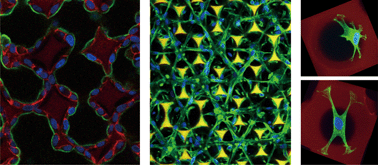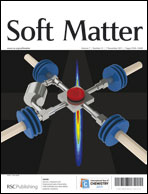Morphology and organization of tissue cells in 3D microenvironment of monodisperse foam scaffolds†
Abstract
Here we demonstrate an efficient method to fabricate large-domain monodisperse foam scaffolds made of gelatin for 3D cell culture. We tested three distinct tissue cell types cultured in foam scaffolds composed of uniform spherical pores. The cells displayed appropriate morphological and physiological characteristics: epithelial cells formed cyst-like structures and were polarized inside pores, myoblasts adopted a tubular structure and fused into myotubes, and fibroblasts exhibited a wide variety of morphologies. Scaffolds with uniform pores can thus provide a platform for systematic study of 3D cell–matrix interactions.


 Please wait while we load your content...
Please wait while we load your content...